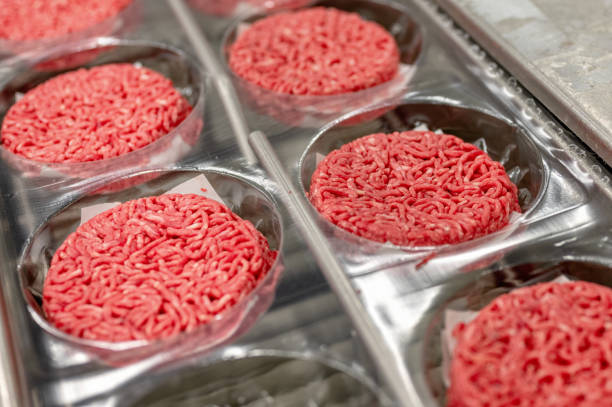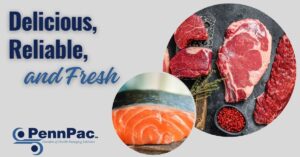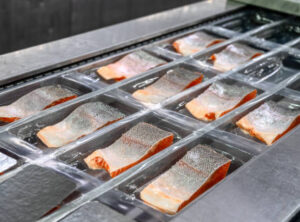
Key Takeaways
- Understanding the types and properties of food-grade thermoforming films is crucial for optimal packaging solutions.
- Compliance with food safety standards ensures the integrity and safety of packaged food products.
- Advanced packaging solutions like MAP and blister packs enhance product shelf life and consumer appeal.
Introduction
Food-grade Thermoforming film plays a crucial role in modern packaging solutions, especially in the food industry. Thermoforming films are thin plastic or polymer sheets that become moldable when heated. They are extensively used to create custom-shaped packaging solutions that meet various industry needs. Selecting the right thermoforming film is vital for ensuring packaging performance, shelf life, and regulatory compliance, especially in food packaging. This blog post will delve deep into food-grade thermoforming films, understanding their properties, applications, and their significant impact across various sectors. Understanding Thermoforming Film: A Comprehensive Guide for Buyers
Understanding Thermoforming Film
Definition & Materials
Thermoforming films are specialized plastic sheets that soften under heat and can be shaped using vacuum or pressure over molds. Common materials utilized in the production of these films include:
- PET (Polyethylene Terephthalate): Known for its excellent clarity and barrier properties.
- PP (Polypropylene): Robust and resistant to high temperatures.
- PE (Polyethylene): Cost-effective with good flexibility.
- PA (Polyamide): Offers superior strength and barrier features.
- EVOH (Ethylene Vinyl Alcohol): Known for excellent gas barrier properties.
Key Properties
The key properties of thermoforming films make them suitable for various applications:
- Transparency & Gloss: Enhances product visibility and aesthetic appeal.
- Barrier Capabilities: Protects against oxygen, moisture, and UV light, which is crucial for preserving product quality. High Barrier Films for the Flexible Packaging Market
- Puncture Resistance & Sealability: Ensures durability and secure packaging.
- Thermoformability: Allows ease of shaping into various container forms.
These properties are essential for achieving high-quality food-grade thermoforming films that meet market demands.
Food-Grade Thermoforming Film
Detailed Explanation
Food-grade thermoforming films meet strict food safety standards and are designed to be non-toxic. These films help create a safe environment for food storage by preventing contamination.
Benefits for the Food Packaging Industry
- Excellent Barrier Properties: Effective in extending the freshness and shelf life of food products by protecting them from spoilage.
- Compatibility with Processes: Suitable for high-heat processes such as pasteurization and for freezing applications.
- Enhanced Appearance: Provides high clarity and gloss that promotes product appeal on retail shelves.
Compliance with Food Safety Standards
Food-grade thermoforming films must comply with FDA and international food safety regulations to prevent the migration of harmful substances into the food they package. Food Safety in Flexible Packaging Films
These attributes and compliance factors make food-grade thermoforming films invaluable in the food packaging sector.
Meat & Cheese Thermoforming Packaging Solutions
Meat & cheese thermoform packaging refers to specialized applications designed specifically for perishable items. These films offer high barrier protection to shield products from oxygen and moisture, thereby extending shelf life and preserving freshness. Want to Extend Shelf Life? Consider these 3 Flexible Packaging Films
Advantages
- Preservation: Maintains the quality and safety of perishable meat and cheese products by preventing exposure to spoilage agents.
- Shelf Life Extension: Reduces spoilage and increases product shelf life, making it ideal for consumers.
Medical Device Thermoforming Film
Applications Overview
Medical device thermoforming film is specifically used in packaging sterile medical instruments. This type of film is designed for precision forming and upholds stringent cleanliness standards.
Importance
These films ensure the integrity and sterility of medical devices by providing:
- Tamper-Evident Seals: Assures consumers that products have not been compromised.
- Leak-Resistant Features: Ensures that contents remain uncontaminated and secure.
Case Studies
Successful implementations of medical device thermoforming films can be found in:
- Pharmaceutical Blister Packs: Ensure individual items are protected against the environment.
- Medical Tool Packaging: Proven reliability and safety in high-stakes applications.
Forming Web & Lidding Film Pairing
Importance of Proper Pairing
The correct pairing of forming web & lidding film is essential for ensuring optimal seal integrity and protection of the product within the packaging.
Selection Strategies
When selecting films, consider:
- Barrier Properties: Match to specific product needs.
- Seal Compatibility: Ensure that the lidding film aligns with the forming web for secure sealing.
- Mechanical Strength: Assess durability based on the expected handling and transport conditions.
Examples of Successful Pairings
- Moisture Barrier Lidding: Paired with structurally strong, thermoformable webs for food packaging enhances shelf life by preventing moisture intrusion.
- Proper pairing can significantly improve packaging performance and product longevity.
Matching Films to Applications
Cost-Benefit Analysis
Evaluating the cost of different thermoforming films against their benefits, such as shelf life extension and overall packaging efficiency, is crucial for businesses.
Impact on Packaging Efficiency and Sustainability
The choice of film affects:
- Transportation Weight: Thinner, lighter films can reduce shipping costs.
- Recyclability: The environmental footprint can be reduced by selecting recyclable materials.
- Sustainability Trends: Integration of PCR (post-consumer recycled) materials is becoming increasingly important in the industry.
Future Trends
Emerging technologies are focusing on:
- Improved Barrier Properties: Enhancing freshness and safety.
- Enhanced Recyclability: Making packaging solutions more eco-friendly.
- Balancing Food Safety with Eco-friendliness: Developing sustainable options that do not compromise health standards.
Conclusion
In conclusion, selecting the appropriate food-grade thermoforming film is vital for maintaining safety, durability, visual appeal, and cost-effectiveness in packaging solutions. Businesses are encouraged to evaluate their specific needs carefully and engage with packaging experts to select the best film solutions for their products.
Now is the time to explore the current technologies in film, ensure compliance with regulations, and partner with specialized suppliers for optimal packaging outcomes.
Contact PennPac today to start your conversation!
FAQ
What are the main types of materials used in food-grade thermoforming films?
The main types include PET, PP, PE, PA, and EVOH, each offering unique properties suited for different packaging needs.
How do food-grade thermoforming films comply with safety standards?
They meet FDA and international regulations to prevent the migration of harmful substances into food, ensuring safety and compliance.
What are the benefits of MAP in thermoforming films?
MAP helps in creating controlled atmospheres within packaging, enhancing product freshness and extending shelf life by limiting oxygen and moisture exchange.
How do blister pack forming films enhance consumer appeal?
They provide clear visibility of the product, enhanced protection, and tamper-evident features, making the packaging more attractive and trustworthy to consumers.
What future trends are expected in thermoforming film technologies?
Future trends include improved barrier properties, enhanced recyclability, and the development of sustainable packaging options that maintain high safety standards.



